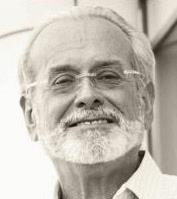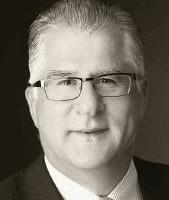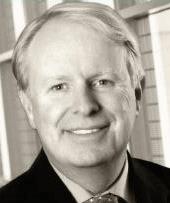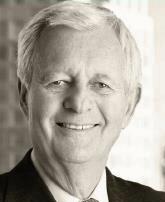Balancing Biopharma's Bright Future Against Its Tarnished Image — Insights From 6 Retired CEOs
By Rob Wright, Chief Editor, Life Science Leader
Follow Me On Twitter @RfwrightLSL

Francois Nader knows of dark days. “When I joined NPS [Pharmaceuticals] we downsized the company from 450 people to 17,” he says. The company’s former CEO admits that was one of his most hated days as an executive, and he vowed never to put either himself or the company in a situation where he’d have to do that again. But the 30-year biopharma veteran knows of many more bright days, such as being at the helm of NPS when it was acquired by Shire for $5.2 billion. Today Nader is considered “retired,” a word he prefers to qualify. “I don’t think any one of us is technically retired,” he says in reference to the prolific group of former CEOs assembled for this article. “There is so much we all are still trying to do.”
At Life Science Leader, we not only wanted to find out what life is like after retiring from a pharma CEO role but also what some of these leaders have to say now — unrestrained by corporate lawyers and PR teams — about the current state of the industry. What would they do differently? Whom are they still mentoring, and what are they advising?
We successfully connected with the following six former CEOs: Mike Bonney (Cubist), Hank McKinnell, Ph.D., (Pfizer), Francois Nader, M.D., (NPS Pharmaceuticals), David Pyott (Allergan), Stephen Sherwin, M.D., (Cell Genesys), and Henri Termeer (Genzyme). As Nader previously noted, all of these men are anything but retired; they are all current members of numerous corporate and nonprofit boards and quite active in mentoring. What follows are their thoughts on the biopharmaceutical industry, drug pricing, and so much more.
A BOARD-LEVEL PERSPECTIVE ON BIOPHARMA’S FUTURE
The first question posed to each executive was how they see the biopharmaceutical industry performing during the next five years and then the five years after that. The consensus was overwhelmingly positive. Stephen Sherwin believes the next 10 years in biopharma will someday be looked upon as the “golden age” of biomedical research. But as Hank McKinnell notes, it is what is being done today that is setting the table for biopharma’s future. “Our industry is unusual in that we have 12- to 15-year lags in product discovery and development,” he shares. “What we are seeing today is a reflection of the state of the industry a decade or so ago.” As an example he cites the mapping of the human genome in April 2003. “Though a massive effort was applied to utilize this new genomic information, only fairly recently we have begun to see progress, which is in large part due to the advancement of new technological tools.”
Mike Bonney envisions biopharma’s future involving both headwinds and tailwinds. “Headwinds derive from the political process and focus on pricing and access,” he states. “Tailwinds are the spectacular progress being made in our understanding of human biology.” While Bonney believes the industry will work through a more transparent (and potentially more rational) pricing scheme, he sees a challenge resulting from a supposed tailwind. “It is always difficult to predict when insights will translate into something that meaningfully affects human disease,” he shares.
Francois Nader believes that one of the keys to addressing Bonney’s expressed concern will be the combination of data and technology. “Clinical development remains the backbone of everything we do,” he states. “But the way we run clinical development [i.e., traditional Phase 1, 2, and 3 trials] will evolve in a pretty dramatic way.” This transformation will be the result of having significantly more data and the emergence of biomarkers that will change the way drugs are monitored in the human body. “But even more important will be a greater reliance on nonhuman assessment of drugs,” he continues. “I see animal models and lab work evolving in such a way that we won’t be doing 10,000 to 30,000 patient clinical trials anymore.” Nader anticipates new technologies providing answers as to how a drug will work long before being given to humans in clinical trials, which will significantly reduce risk and drug development timelines, as well as R&D costs.
David Pyott sees containment of skyrocketing R&D costs as one of the biggest drivers of technology adoption. “More costs being shifted to the patient has created a pressure point,” he explains. Relieving this pressure will require more than lower drug prices and higher rebates. “The price of most of the goods we buy as consumers tends to go down, not up,” Pyott affirms. “Biopharma will soon no longer be a privileged outlier, and healthcare in general will soon be in the same realm as most other industries.” Waiting 45 minutes in a doctor’s office before being seen for five minutes will be replaced by telemedicine. Wearables currently track data only in a passive way, but soon these technologies could proactively manage one’s health, something we have already witnessed with insulin pumps.
When asked for examples as to what they find most exciting, there was hesitancy to pinpoint one area of science or technology. “It is the combination of technologies and sciences that are allowing us to deal with issues around assays, delivery, and diagnostics,” says Henri Termeer. As for companies these executives find exciting, many defer to those on whose boards they serve, and with good reason. “Moderna Therapeutics has made amazing progress by getting a Zika vaccine into the clinic within 12 months of project origination,” shares Termeer. “There is the possibility that mRNA could significantly change an expansive component of drug development.” Another breakthrough cited by Termeer was the work being done by Aura Biosciences. “In a very short period of time they have been able to develop a way to treat ocular melanoma, something that had not previously been done.” But perhaps the greatest example of a fantastic breakthrough comes in the area of Hepatitis C. And while these tremendous advances forever changed treatment of the disease, there was an associated shock effect, namely the price (e.g., Sovaldi’s initial price of about $1,000 a pill).
When we asked Mike Bonney what he thinks could make biopharma’s future even brighter, he responds, “I’d like to see the development of a predictive toxicology consortium. This would not only advance the science but would also help bring global regulators along.” Bonney believes combining technology with our growing understanding of how individuals react to various types of medicines could pay huge dividends. “Under the right scenarios, existing huge databases residing inside each company could be contributing to a much broader database,” he elaborates. “Utilizing Big Data techniques, we could analyze what predictive value one might get from various standard tests and identify programs where the toxicological risk is less.”
ARE LOWER MARGINS IN BIOPHARMA INEVITABLE?
Not long ago, an outgoing biopharmaceutical CEO stated that the industry must get ready for lower margins as price resistance will only grow, and R&D costs are not coming down anytime soon. We asked our distinguished group if they agreed with this assessment. “Yes and no,” Nader responds. “Those working to develop products that deliver marginal improvement over currently approved drugs (i.e., business as usual) can expect relatively low margins. However, the industry could potentially have higher margins if we leverage innovation.” For example, instead of treating certain diseases (e.g., diabetes, hypertension, or rheumatoid arthritis) for life, what if these could be cured? If such a situation were to happen, Nader could see companies having very healthy margins.
But why do biopharmas need such high margins to operate? “It’s because of the high rate of failures,” Nader attests. Traditionally, for every 10,000 compounds that start in preclinical, only one makes it to approval. “But what if we can change that proportion by increasing the probability of success in preclinical and clinical development?” he asks. “Instead of spending $1.5 billion for each new entity to make it to market, what if we spent one third of that [i.e., $500 million].” The idea is basically to double or triple R&D productivity, which sounds like an enormous task until you hear it framed by Nader. “We are talking about going from 1 in 10,000, to 2 or 3 out of every 10,000. I don’t think that is too much to ask.”
According to Sherwin, there’s a certain inescapable cost in drug discovery for transformative therapies where we don’t have precedent and are breaking new ground. “I’m not sure those costs can ever be decreased significantly, as they are a cost of scientific discovery, and I am not sure anyone can calculate that.” But he agrees with Nader that the “D” part of R&D (i.e., the cost of clinical trials) is something that can be addressed. “We can do better in how we design clinical trials, determine endpoints, etc.,” he affirms. “We should be looking at clinical trial design and execution with a critical eye, not just from a cost standpoint, because these trials involve patients with diseases. We owe it to them to be as efficient and balanced as possible.”
In oncology, Sherwin’s medical specialty, he says the field is benefitting from being able to identify segments of patient populations based on specific genetic mutations. “In some cases, not all, we have identified druggable targets and have specific therapeutics to aim at those mutations. When doing clinical trials, we can select patients with a specific mutation, which can often result in more successful outcomes derived from shorter trials with a smaller number of patients.” Sherwin sees no reason a similar approach couldn’t be applied in other disease areas. “I find it remarkable that there hasn’t been a greater effort made to segment patient populations based on genetic abnormalities. In the next generation of sequencing technologies, people want and need the ability to gather genetic abnormalities more efficiently so patients can be identified and segmented by diseases that historically have been lumped together.” Rheumatoid arthritis (RA), the most prevalent of the autoimmune diseases, is currently managed by treating just about everyone with a TNF inhibitor (e.g., Remicade). “But if we think differently and apply a precision medicine approach to addressing this and other human diseases, we can expect significant progress in medical R&D,” Sherwin concludes.
From Mike Bonney’s perspective, failure to improve R&D productivity threatens industry innovation at its core. “It’s hard to convince purveyors of capital to take high levels of risk and not receive relatively high levels of return,” he explains. Adding to Nader and Sherwin’s previous suggestions, Bonney thinks R&D productivity can be improved by working more closely with the patient/ provider communities. “There is significant room for improvement via various digital resources and online communities to help clinicians and patients find the appropriate time to utilize a given intervention. In addition, we could be more productive in how we deliver medicines, particularly in the U.S.” According to Bonney, a close review of just about any commercial biopharma’s P&L statement reveals, over time, an enormous increase in the gross-to-net calculation. While this is made up of a variety of factors, the largest has to do with the existence of very complicated pricing schemas. “Depending on the size of the company’s portfolio, a lot of infrastructure costs, whether government or private-payer driven, have been put in place just to manage things like difficult-to-administer drugs,” Bonney elaborates. “A lot of that rise in gross-to-net seems to be going toward funding elements of the healthcare delivery chain that add modest value, and I think we could probably take some of those costs — not easily — out to improve/maintain margins.”
Manufacturing is one of the challenges Hank McKinnell sees for biopharma regarding managing the margins. “We’re moving from a period when drugs were expensive to discover and develop and very inexpensive to manufacture. Drugs are still expensive to discover and develop. However, as we take a more targeted approach to medicine, personalized (biologic) drugs can be much more expensive to manufacture.” While McKinnell is also optimistic that biopharma margins can be positively impacted by improving R&D productivity, industry can’t lose sight of opportunities to become ever more efficient manufacturers.”
WHAT ABOUT DRUG PRICING?
There seemed to be a consensus among these former CEOs that the U.S. consumer is subsidizing global access to biopharmaceutical innovation. “Differential pricing around the world is undeniable, and it’s fundamentally a trade problem,” Bonney attests. “But most people responsible for constructing trade deals don’t want to think about it that way.” The economics of biopharma is that the costs of failure are allocated across the costs of successes and expensed as companies go along. “The marginal costs of producing most pharmaceuticals are minimal,” he continues. “So once a company has gotten a new therapeutic approved and covered all of its sunk costs, it benefits by developing as broad a market as possible.” Most companies prefer to first launch a drug in the U.S. because it is the largest market and an FDA approval serves as the gold standard for most other regulatory bodies. But in doing so, the U.S. consumer is placed in a position of having to pay the highest possible prices for new drugs.
“We don’t currently have a good payment system for biopharmaceutical innovation,” Termeer adds. “If we don’t develop one, we won’t get the desirable effect of innovative therapeutics for patients.” Termeer believes the likelihood of progress in the U.S. is high considering that biopharmaceutical innovations are in the hands of numerous entrepreneurs and a number of large, powerful companies — not a single bureaucracy. He feels that drug pricing decisions can’t be made in a corporate vacuum. “Recent drug pricing decisions by Marathon, Turing, Valeant, and Mylan were stupid. Those were bad business decisions for shareholders because they are not sustainable.”
According to Termeer, any business plan that relies on being able to charge a very high price on something that hasn’t been earned is a bad business plan. “It’s not a right to charge a high price for the sake of giving a higher return to shareholders as this Shkreli guy talks about,” he asserts. “To shareholders, we have a personal responsibility to develop a business that grows, is sustainable, and is allowed to be in the marketplace by society because it makes a contribution that is wanted and needed.” Termeer feels the response to the EpiPen pricing decision is something Mylan leadership should take to heart and never do again. But beyond the negative impact such decisions have on individual companies, it also has a spillover effect that hurts the entire industry. “If you want to build a business that is able to spend a high amount of its revenue on R&D, you need to be very critical of what you are doing and where you put your focus, because you can’t do everything,” he shares. “Pick a few things that are truly worthwhile and can really make a difference, and don’t take shortcuts.”
While McKinnell admits that the United States is being criticized for having some of the highest drug prices in the world, often overlooked is the fact that the U.S. also has some of the lowest prices. “Discounts to managed care can range from 50 to 80 percent, and in some cases drug prices can go all the way down to zero, so as to be made available to those who can’t afford them,” he attests. “Currently, the biopharmaceutical industry is getting the worst of both worlds [i.e., criticism for high prices and massive discounts]. There has to be a better way.” Though he reminds people to be mindful of the antitrust rules (i.e., if a company wants to price its drug artificially high, then it is free to do so), fairly priced drugs in a more transparent pricing system that everybody can understand could be a useful solution. In such a scenario, McKinnell believes companies would have to justify the price based on benefit and value, and the only way intermediaries (e.g., payers) could extract additional discounts would be to deny or ration access. “I don’t think any intermediary in the U.S. would be successful with a program that rations access to essential medical care. The current confusion that exists around drug pricing, combined with the criticism currently being heaped on the industry, along with the critical importance drugs have for patients, demands some new thinking that doesn’t involve the innovator’s losing too much to distribution-chain middlemen.”
ADVICE FOR TODAY’S LEADERS
Over 15 questions were posed to this group of industry icons. And while all responses provided great insight, perhaps the most revealing were their answers to the question, “What advice do you have for today’s leaders on overcoming biopharma’s current image problem?”
ON COMMUNICATING EXTERNALLY ABOUT DRUG PRICING
“As an industry we are the worst communicators ever,” Francois Nader begins. “Since I started my professional biopharmaceutical career, our message has not changed.” Nader feels that harping on the fact that biopharma spends 10 to 15 percent of its revenues on R&D simply doesn’t resonate with the public. “We need to focus on explaining how we are able to treat a condition or how we have been able to change a patient’s life.”
Building on Nader’s point, Termeer cautions CEOs not to try to take on the task of communication with the public in isolation. “Working with organizations like BIO and PhRMA is essential,” he states. “It is easy to belong and even easier to learn.”
Pyott has a different opinion. “With all due respect to PhRMA and BIO, industry leaders cannot rely solely on trade associations to carry the message.” As these organizations tend to search for common ground among its members, Pyott feels the end result is messaging that is “plain vanilla.” Unlike Nader, Pyott believes there is value in reminding the public just how much it costs to develop new drugs and devices. However, he feels such efforts get “blown to smithereens” in a matter of minutes by the bad behavior of a few.
In addition, Pyott advises resisting internal advice to overly water things down. “This is not to say you go out and jump off the ledge without a parachute,” he continues. “You should listen to the advice of your lawyers and communications teams, but at some point you have to step out and tell a passionate and compelling story.” He says it requires personal engagement to best manage the message. “People need to see the gleam in your eye that you really believe what you are doing,” he attests. “I’d love to see some Big Pharma CEOs step up, stand tall, take it on the chin, be humble but not apologetic, and tell their companies’ stories.”
McKinnell, a former chairman of both PhRMA and the Medical Device Manufacturers Association (MDMA), agrees with Pyott that leaders shouldn’t rely on these organizations to communicate the message, but he sides with Termeer in not taking an individualized communication approach. “We need a third way that works within industry associations, a group of like-minded CEOs who charter market research, think of public perceptions of industry, and find alternatives on how we might work to change those perceptions.”
Sherwin, a former chair of BIO, feels that the cost of pharmaceutical products has taken on increased visibility and needs to be addressed by industry both individually and collectively. “We need to justify the value of a drug’s price, which can be measured unto itself, relative to derived healthcare cost savings, or in comparison to other currently available treatments. He believes that if companies do a good job articulating the value that treatments provide, they will be better able to get fair and reasonable pricing. “When I was at Genentech, one of the drugs we brought to market was TPA, a thrombolytic agent for prevention of heart attacks in patients with acute chest pain. Think about how much money has been saved related to reduced hospitalizations due to a product like this. That’s an example of how we need to consistently think when communicating the value this industry brings patients.
He admits it’s much easier to say things like, “If we want innovative drug development, we have to be willing to pay high prices for drugs,” because that’s what drives the financial engine of drug discovery. But in his view, such an argument today falls flat. Sherwin points to governing bodies in Europe requiring price and value justification as what is likely coming to the U.S. “We can either wait until laws are passed that we may not feel comfortable with, or we can take the initiative to address an issue looming on the horizon.” For example, when Sherwin was BIO chair, the Affordable Care Act (ACA) was before Congress. “One of the ACA provisions was the biosimilars exclusivity period and some other aspects of biosimilar regulation,” he details. “During BIO board meetings in prior years, there was this attitude that we were never going to allow biosimilars, as doing so would kill industry R&D.” But rather than fight, BIO went on the offensive, coming up with proposals for how the FDA could regulate biosimilars, which are currently in place today. “By way of analogy, we need to do the same thing on the subject of drug pricing. Sustained and continued investment in R&D requires us being able to articulate drug value and cost savings.”
ON CORPORATE CULTURE — CREATION, TRANSITION, MAINTENANCE
“Entrepreneurs have to take all kinds of risks to reach beyond what has already been done,” Termeer states. When building Genzyme, the approach was to create a culture that attracted those with an entrepreneurial spirit, or as Termeer likes to say, “folks driven to do more.” He explains, “We were a very purpose-driven company as opposed to a strategy-driven company. In a purpose-driven company, the process and the people matter the most, whereas in a strategy-driven company, it is the system and structure.” Termeer believes that the reason Genzyme was so successful was its focus on people. “In such an environment, people view the company as bigger than themselves,” he states. “From my experience, having a purpose-driven orientation is very motivational and creates that sense of motherhood and apple pie, which makes all the difference in the world.”
For a deeper understanding of what goes into creating a purpose-driven company, Termeer suggests reading, The Individualized Corporation: A Fundamental New Approach to Management by Sumantra Ghoshal and Christopher Bartlett.
For the past 20 years, Mike Bonney has been involved in leading organizations through the transition from being development-stage companies to those with commercial aspirations. According to Bonney, as commercial issues become more prominent, so do lawyers. “You’ve got liability, promotional, and pricing concerns, to name just a few, and all can have a very chilling effect on employee risk taking, which is a very serious problem for small, fast-growing companies. Suddenly, risk taking that was essential when at the development stage seems overly risky for a commercial venture.” Bonney comments that attorneys are trained to help manage risk, and the easiest way to do so is to simply avoid it altogether. “As senior leaders, you can’t delegate all your decision making to the lawyers on staff. You want their thoughtful articulation of the rules and regulations so you can make informed decisions about where you will and won’t take risks. Managing this cultural transition from development to commercial is a critical aspect of becoming a successful company.”
After he left Pfizer and was mentoring younger CEOs and joining boards, McKinnell says he learned one of the most important messages he has for leaders of any organization. Inevitably, one of the leaders he would be working with would thank him and acknowledge that McKinnell could be doing many other things in his retirement. “I spent 36 years at Pfizer, and had a great and satisfying career,” he shares. “But I don’t recall anyone saying thank you, and I regret to admit that I as a leader, underestimated the power of that. Don’t forget that everybody who works at your organization has other options, yet they chose to work with you. There is power in saying thank you and for showing appreciation.”
ON EXECUTION
“My motto in life is: To be successful, be different — exceedingly well,” Nader shares. “Coming up with a brilliant idea doesn’t help much if the execution [done exceedingly well] doesn’t follow.” NPS was developing two drugs for large indications. Nader decided to switch both to rare disease indications where there was no competition. “We succeeded in getting these approved and launched in both the U.S. and in Europe. That execution enabled us to make a successful exit and be acquired by Shire.”
When he talks to young or first-time CEOs/entrepreneurs, he asks them to explain how they can run their businesses differently from their competition. “More importantly, I ask them to explain how they will do it exceedingly well.” Nader says they can speak for hours about their product or technology, but when asked how they are going to actually do it, the result is often long silence. “This is when I usually hand them Larry Bossidy and Ram Charan’s book, Execution: The Discipline of Getting Things Done, and suggest they read it.”
ON SOCIAL MEDIA
Most of these CEOs admit that social media is not their strong suit, though they all do use it in various forms. “Social media is the most important tool that allows you to think completely differently about your audience in these biotech environments,” Termeer stresses. “In the past, with ultra-rare diseases, it was so difficult to get in touch with these extremely small patient populations. With social media, not only can you connect with the patient population in a completely different way, but you can also stay connected.” He views company leaders not becoming competent in the use of social media to be missing an opportunity that will, over time, become increasingly expensive.
McKinnell isn’t sure if Twitter is the right forum for a CEO. “It may be true that you can capture headlines and get attention through Twitter and Facebook, but I’m not sure they are the right places to communicate complicated, serious messages,” he explains. “It is hard for a leader to paint a vision that convinces people how great something will be in 140 characters.” For internal communication he recommends (whenever possible) doing so in person. For external communication he still views television as a strong medium.
Pyott, Bonney, and Sherwin advise taking a disciplined approach when using social media. This is because use of social media can feel informal, almost like having a conversation. “In a conversation, unlike giving a prepared talk, people don’t usually take a disciplined and intentional approach,” says Bonney. “With social media you still have to remember that you are speaking on behalf of the company.” As such, Pyott, Bonney, and Sherwin advise understanding the regulatory and legal requirements before use. Nader’s tip is to ask the following questions before using it: “Why am I doing it? What’s the purpose? What’s my message?”
ON LEADERSHIP
One of the questions posed to all of these executives was whether they found a particular tool useful to becoming a better leader. Mike Bonney referenced Team of Rivals by Doris Kearns Goodwin as being very instructive on team building. Francois Nader referenced The Goal: A Process of Ongoing Improvement by Eliyahu Goldratt and Jeff Cox as being helpful when developing corporate values, vision, and mission statements. Hank McKinnell highlighted Ken Blanchard and Spencer Johnson’s book, The One Minute Manager, as a useful model for managing people.
“But when it comes to leadership, what I found particularly helpful is to have a third party solicit anonymous feedback from your direct reports, and maybe even a step or two beyond that,” says McKinnell. “It was through this mechanism that I was able to find out what I was doing as a leader that people particularly appreciated, as well as those things that weren’t that helpful.” McKinnell, like most CEOs, used to send out Christmas cards to about 200 people in the organization. He says this became known as the Christmas card experiment. During one year, he sent out custom-printed cards with a generic holiday message and signed each one. “The feedback I got was that this was very impersonal and I should probably stop doing it,” he reveals. “I thought about this for a while and decided to take a different approach.” The next year he again sent Christmas cards. But this time he wrote a personal message that was unique to each person. McKinnell described the feedback he received from those cards as being astronomical. “More people commented about my messages than I ever expected,” he shares. From this McKinnell learned that some of the things he thought to be helpful not only weren’t but were actually getting in the way. “But it isn’t just learning what is and isn’t working but being able to adjust course that is particularly important,” he concludes.
Pyott suggests taking advantage of coaches. “Twelve years ago, we invited an executive trainer, Marshall Goldsmith, to conduct a presentation in the office. He had some very simple tools for improving team dynamics, and I will never forget those lessons on speaking up, not having hidden agendas, and thinking about how your behavior is impacting a colleague.” Bonney adds to this by stating that coaches shouldn’t be reserved for remedial work. “Coaching can help executives get to the next stage,” he affirms. “Like many young CEOs, I was probably more willing to engage in conflict than most. But I didn’t like having one-on-one conflict, as I didn’t find I was very productive at it.” To help, Bonney engaged Dianne Argyris, whose father (Chris Argyris) was the founder of the field of Organizational Behavior. “She helped me to develop the skills to have much more productive and less personalized conversations when conflict was inevitable,” he shares. “I recommend her to many CEOs who find themselves in difficult interpersonal situations.” Bonney says the nature of being a leader results in many difficult conversations, and therefore, one should spend a fair amount of time getting ever more effective at it.
Admittedly, attempting to combine the thoughts of these six industry icons into one concise article was a rather ambitious project. But there was a very good reason for doing so. Perhaps Hank McKinnell put it best when stating during the first few minutes of our interview, “I don’t know of any other industry that does more good for more people than the biopharmaceutical industry.”
Editor’s Note: On May 12, 2017, former Genzyme CEO Henri Termeer passed away unexpectedly at his home in Marblehead, MA. The man who considered himself a “biotech entrepreneur” was actually the first executive to be interviewed for this feature (February 27, 2017). Prior to his passing, Termeer reviewed this, as well as the two additional articles developed from our conversation that appear in the “Beyond The Printed Page” section of our publication. We at Life Science Leader mourn the loss of an industry icon who gave so much to biopharma.
STEVE SHERWIN
 Stephen Sherwin, M.D., is currently a venture partner at Third Rock Ventures, where he focuses on drug-discovery-stage projects throughout the company’s portfolio. In addition, he serves as a Clinical Professor of Medicine at the University of California, San Francisco (UCSF) and a volunteer Attending Physician in Hematology-Oncology at Zuckerberg San Francisco General Hospital. He is also a member of the scientific steering committee of the Parker Institute for Cancer Immunotherapy. Sherwin currently serves on the following company boards:
Stephen Sherwin, M.D., is currently a venture partner at Third Rock Ventures, where he focuses on drug-discovery-stage projects throughout the company’s portfolio. In addition, he serves as a Clinical Professor of Medicine at the University of California, San Francisco (UCSF) and a volunteer Attending Physician in Hematology-Oncology at Zuckerberg San Francisco General Hospital. He is also a member of the scientific steering committee of the Parker Institute for Cancer Immunotherapy. Sherwin currently serves on the following company boards:
- Aduro Biotech (NASDAQ: ADRO)
- Biogen (NASDAQ: BIIB)
- Neon Therapeutics
- Neurocrine Biosciences (NASDAQ: NBIX).
Previously he was chairman and CEO of Cell Genesys, a cancer immunotherapy company (1990 – 2009) until its merger with Biosante Pharmaceuticals (now ANI Pharmaceuticals). He is also cofounder and chairman of Abgenix, an antibody company that was acquired by Amgen in 2006, and cofounder and chairman of Ceregene, a gene therapy company which was acquired by Sangamo Therapeutics in 2013. In addition to having worked at the National Cancer Institute and Genentech, he served on the board of directors of the Biotechnology Innovation Organization (BIO, 2001 – 2014), BIO chairman (2009 – 2011), and was a member of the President’s Council of Advisors in Science and Technology (PCAST) Working Group on Drug Development (2011 – 2013).
HENRI TERMEER - A REMEMBRANCE
By Robert Weisman, Healthcare Business Writer, The Boston Globe
 My introduction to Henri Termeer came during a stressful time for his pioneering biotechnology company.
My introduction to Henri Termeer came during a stressful time for his pioneering biotechnology company.
I was a veteran business reporter but new to the biotech beat. And I expected the familiar CEO bobbing and weaving when I asked him about the 2009 contamination at a Boston manufacturing plant that forced Genzyme to temporarily ration its treatment for a rare disease. But his responses were forthright, focused not on the jitters of investors but on the company’s determination to set things right for patients. He was similarly candid with me — and with Globe readers, his staff, and the wider community — throughout the months of negotiations preceding Genzyme’s acquisition in 2011.
It wasn’t until later that I learned Henri had been a mentor to dozens of executives who went on to run other biotechs. In that way, he seeded an industry working to discover new treatments and cures for diseases around the world. I also came to understand his contributions as a founding father of a field on the cutting edge of discovery and innovation.
For my part, I was mostly struck by Henri’s openness and accessibility, a stark contrast to the posture of many other executives I’ve covered in crisis situations. He took my calls and answered my questions and patiently educated me about the origins and promises of biotech. He was as generous with his money as he was with his time. About six months after the Genzyme buyout, Henri and his wife Belinda donated $10 million to establish a research center for targeted cancer therapies at Massachusetts General Hospital.
Who will take the place of Henri Termeer — trailblazer, entrepreneur, and mentor — in the world of drug discovery and patient advocacy? Hopefully, one or more of the many people he guided and inspired during his career in biotechnology.
MICHAEL BONNEY
 Michael Bonney currently serves on the boards of: Celgene (NASDAQ: CELG); Alnylam Pharmaceuticals (NASDAQ: ALNY); Global Blood Therapeutics, Inc. (NASDAQ: GBT); Revolution Medicines Inc; Magenta Inc; and the Whitehead Institute for Biomedical Research. In addition, he is also a trustee of Bates College, the Gulf of Maine Research Institute, and TELKA fund complex, which focuses on healthcare investing. Bonney is a former partner of Third Rock Ventures, which he joined after retiring from Cubist Pharmaceuticals as the company’s CEO in 2014.
Michael Bonney currently serves on the boards of: Celgene (NASDAQ: CELG); Alnylam Pharmaceuticals (NASDAQ: ALNY); Global Blood Therapeutics, Inc. (NASDAQ: GBT); Revolution Medicines Inc; Magenta Inc; and the Whitehead Institute for Biomedical Research. In addition, he is also a trustee of Bates College, the Gulf of Maine Research Institute, and TELKA fund complex, which focuses on healthcare investing. Bonney is a former partner of Third Rock Ventures, which he joined after retiring from Cubist Pharmaceuticals as the company’s CEO in 2014.
Bonney began his pharmaceutical industry career in 1984 with Zeneca Pharmaceuticals. He held a number of positions of increasing responsibilities in sales, marketing, and strategic planning, rising to the position of national business director. He joined Biogen in 1995, eventually becoming the company’s VP of sales and marketing, and was responsible for one of the most successful drug launches in biotech history, Avonex. Bonney joined Cubist in 2002 as the company’s president and COO. He became CEO in June 2003, a position he held until 2014 when it was acquired by Merck for $9.5 billion.
A former board member of NPS Pharmaceuticals until its acquisition by Shire in 2015, he was also a member of the boards of PhRMA from 2009 to 2014 and BIO from 2004 to 2009.
FRANCOIS NADER
 François Nader, M.D., is current chairman of the board of Acceleron Pharma Inc. (NASDAQ:XLRN). He is also a board member of: Advanced Accelerator Applications (NASDAQ: AAAP), Clementia Pharmaceuticals, and ArRETT Neurosciences. In addition, Nader is the president of the Jesra Foundation, a trustee of the New Jersey Chamber of Commerce, and sits on the advisory board of the Open Future Institute.
François Nader, M.D., is current chairman of the board of Acceleron Pharma Inc. (NASDAQ:XLRN). He is also a board member of: Advanced Accelerator Applications (NASDAQ: AAAP), Clementia Pharmaceuticals, and ArRETT Neurosciences. In addition, Nader is the president of the Jesra Foundation, a trustee of the New Jersey Chamber of Commerce, and sits on the advisory board of the Open Future Institute.
From 2008 to 2015, Dr. Nader served as president, CEO, and board member of NPS Pharmaceuticals, a company he transformed into a leading global biotech focused on delivering innovative therapies to patients with rare diseases. Nader retired from NPS when it was acquired by Shire for $5.2 billion. When asked what he misses about no longer being a CEO he stated, “I loved being CEO during both good and bad days. I truly do miss it. Everyone will tell you they miss the team, which I certainly do. But what I miss most is not being at the helm of something that is designed to make a difference. You can be at the helm of anything, which is fun. But working as a leader in our industry where we are trying to make a difference for human beings is an unbelievably positive feeling.”
DAVID PYOTT
 David Pyott currently serves on the boards of: Avery Dennison Corporation (NYSE: AVY), Royal Philips (NYSE: PHG) in the Netherlands, BioMarin Pharmaceutical (NASDAQ: BMRN), and Alnylam Pharmaceuticals (NASDAQ: ALNY). Pyott served as the chairman and CEO of Allergan (since 2001 and 1998 respectively) until 2015 when the company was acquired by Actavis in a deal valued at approximately $70.5 billion.
David Pyott currently serves on the boards of: Avery Dennison Corporation (NYSE: AVY), Royal Philips (NYSE: PHG) in the Netherlands, BioMarin Pharmaceutical (NASDAQ: BMRN), and Alnylam Pharmaceuticals (NASDAQ: ALNY). Pyott served as the chairman and CEO of Allergan (since 2001 and 1998 respectively) until 2015 when the company was acquired by Actavis in a deal valued at approximately $70.5 billion.
While Pyott has had a very distinguished biopharmaceutical industry career that began in 1980 when he got his start with Sandoz Nutrition, perhaps his crowning achievement was the successful prevention of a hostile takeover attempt of Allergan, a company he had grown from approximately $1.1 billion in annual sales. Initiated by Bill Ackman in April 2014, the billionaire hedge fund manager and activist investor had teamed up with Valeant Pharmaceuticals (NYSE: VRX) and its then CEO, J. Michael Pearson. The initial offer was valued at just under $46 billion, a supposed 38 percent premium over the company’s value. However, Pyott wasn’t interested because: it significantly undervalued Allergan; he didn’t believe the Valeant business model of buying companies and jettisoning R&D to be sustainable, and a significant portion of the offer was in Valeant stock, which Allergan shareholders would end up owning if a deal came to pass. For more on how Pyott succeeded in preventing the takeover, be sure to read: “Inside a Hostile Takeover: Lessons From The Allergan-Valeant War” in Life Science Leader’s February 2016 issue.
HANK MCKINNELL
 Hank McKinnell, Ph.D., currently serves as the chairman of the board of Moody’s Corporation. In addition, he currently serves on the boards of ViewRay, Inc. (NASDAQ: VRAY) and ChemoCentryx (NASDAQ: CCXI). Since retiring from Pfizer as its chairman and CEO in 2007 (a company he helped to grow into the world’s largest drugmaker), McKinnell has held a number of other corporate board and executive-level positions.
Hank McKinnell, Ph.D., currently serves as the chairman of the board of Moody’s Corporation. In addition, he currently serves on the boards of ViewRay, Inc. (NASDAQ: VRAY) and ChemoCentryx (NASDAQ: CCXI). Since retiring from Pfizer as its chairman and CEO in 2007 (a company he helped to grow into the world’s largest drugmaker), McKinnell has held a number of other corporate board and executive-level positions.
Having joined Pfizer in Tokyo back in 1971, he held positions of increasing responsibility around the world, including service as president of Pfizer Asia, Pfizer country manager Iran/Afghanistan, VP of strategic planning, CFO, president of Pfizer medical device group, president of Pfizer pharmaceutical group, and president and COO. McKinnell is chairman emeritus of the Connecticut Science Center; the Business Roundtable, an association of 170 CEOs of America’s largest companies; PhRMA; the Food and Drug Law Institute; and the Medical Device Manufacturers Association (MDMA). Dr. McKinnell also served as vice chairman of the World Economic Forum (WEF) and as a member of the WEF Foundation Board of Trustees. He served on the President’s Advisory Council on HIV/AIDS.
